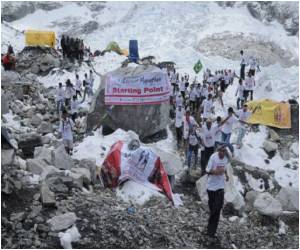A recent diagnostic tool is a shot in the arm to scientists in understanding global climate patterns.

The development represents a breakthrough in the fields of both landslide (rock avalanche) research and our interpretation of climate change from glacial deposits. It found the assumption that glacial deposits always reflect climatic change was unreliable, the journal Geology reports.
Advertisement
Advertisement
The study revealed the cause of glacial deposits was more complex than originally thought and some deposits identified as being of climatic origin were found to be the product of the deposition of rock avalanche debris on glaciers, larsen said.
"Glacial deposits provide a vital proxy for past climates, and it was previously assumed that they always reflected climatic change," larsen said.
"However, glacial deposits cannot accurately be used for climate change studies without first understanding their origin. Through this new technique, we were able to differentiate whether glacial deposits are purely the product of climatic factors or resulted from rock avalanches," said larsen.
"Many glaciers of the Southern Hemisphere occur in seismically active mountain ranges, with many rockfalls, and this new technique could lead to a new reconstruction of past climate change."
The new diagnostic tool was tested on glacial deposits from around the world, including glaciers near Mount Cook in New Zealand, previously used to infer past climate changes.
Source-IANS









